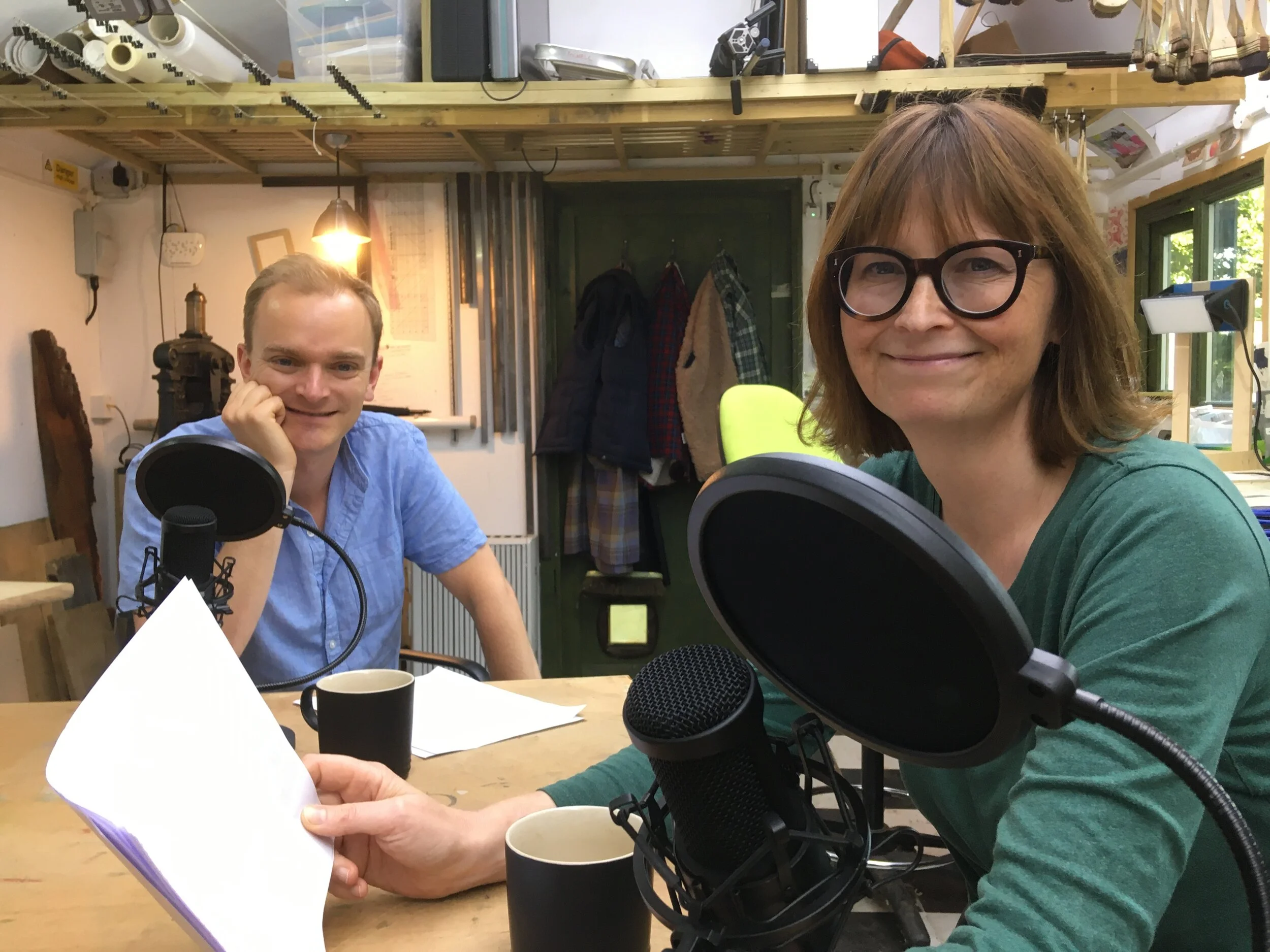Signing your work
Episode 77 : To sign or not to sign
Do you sign your work with a flourish or a simple initial? In this episode Laura and Peter discuss the importance of adding your signature, the different ways to do it and how a signature can enhance or detract from a finished work.
The Useful Stuff
Choose the right equipment for the job. If you are working with a delicate surface, make sure you won’t damage the work as you sign.
If you are signing multiples of your work, as Laura does with her prints, it’s helpful to get all the signing done at the same time so that work is ready to be dispatched or framed as needed. If your medium has accepted rules for signatures, be sure to understand them. Collectors and galleries tend to prefer artists to observe convention.
If, like Peter, you can be flexible about where you sign the work and make choices of colour etc., be careful to think about how the signature sits with the work. Sign the work when you feel comfortable to do so, there’s no need to wait until the work is finished if that doesn’t feel right
Art buyers and collectors very much prefer work to be signed. They are investing in you and your signature is your endorsement of the work. Without your signature, the work is likely to be seen as of less value and can be mistaken as a reproduction. Don’t be shy, but do be discreet. Aim for quiet confidence rather than an overbearing flourish.
Never sign a mount which may become separated from the work. If you can’t sign the front for any reason, make sure you sign the back. If you supply framed work, add details of the work to the reverse of the frame and note the signature is on the back of the work.
If you are working with a medium that can’t be signed in a conventional sense, provide a certificate of authentication with your signature and details of the work. Laura does this anyway as her clients like to receive it as part of the purchase.
Dating a work is optional, but be sure to have a record of the year for every artwork. Galleries and competitions may require date details and you should keep them for your own records anyway.
The Takeaway
Your signature is that crucial little mark that shows you ‘own’ the artwork. Make sure you add your signature to all your work and don’t forget to add date and any other details to the back of the work, or keep them alongside. You’ll be grateful for it in the future!
This Podcast is sponsored by Michael Harding Colours. For more information about Michael’s colour range or to find a retailer near you, please visit www.michaelharding.co.uk







